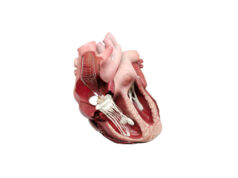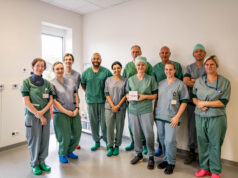
Six-month results from the TANDEM I first-in-human clinical trial, investigating the CroíValve Duo system for the percutaneous treatment of tricuspid regurgitation (TR), were presented at New York Valves 2024 (5–7 June, New York, USA).
The Duo system is a novel transcatheter coaptation valve that works in tandem with the native tricuspid valve to restore valve function, using an anchor system which leaves the right heart and native valve apparatus untouched.
Wojciech Wojakowski (Medical University of Silesia, Katowice, Poland) presented the results of the prospective, non-randomised, multicentre study designed to evaluate the safety and performance of the Duo system in patients with severe symptomatic TR. The study reported on 10 patients enrolled, showing sustained positive outcomes.
Following 30-day outcomes presented last year, the six-month results demonstrated significant TR reduction by an independent core lab assessment, with TR reduced to moderate or less in over 85% of patients, even with massive or torrential TR at baseline.
Patients also experienced markedly improved functional and quality of life outcomes, with a notable significant increase in both Kansas City Cardiomyopathy Questionnaire (KCCQ) score and six-minute walk test (6MWT) over baseline. The trial reported a 100% survival rate at six months.
No incidences of arrhythmia or conduction disorder requiring permanent pacing were reported, demonstrating the advantages of avoiding right heart contact. Additionally, the data show stable long-term device positioning and function, while supporting natural reverse remodelling. Average device time was reported as 43 minutes.
“The six-month results with the Duo system are highly promising, not only for its clinical safety and efficacy, but also for the procedure’s simplicity and the technology’s broad applicability,” stated Wojakowski. “This system offers new hope for patients suffering from severe TR, providing a versatile and predictable treatment option that simplifies the procedural and imaging experience for operators.”
The Duo system is delivered percutaneously and is secured using a novel anchor system which leaves the right heart and native valve apparatus untouched.
“We are encouraged by these data, which demonstrate the Duo’s success in reducing TR and improving patients’ quality of life,” said Martin Quinn, chief medical officer of CroíValve. “Our goal is to expand the reach of treatment option for patients with tricuspid valve disease. We are committed to building strong evidence to support emerging therapies like the Duo system, with further clinical studies and patient follow-ups underway.”










